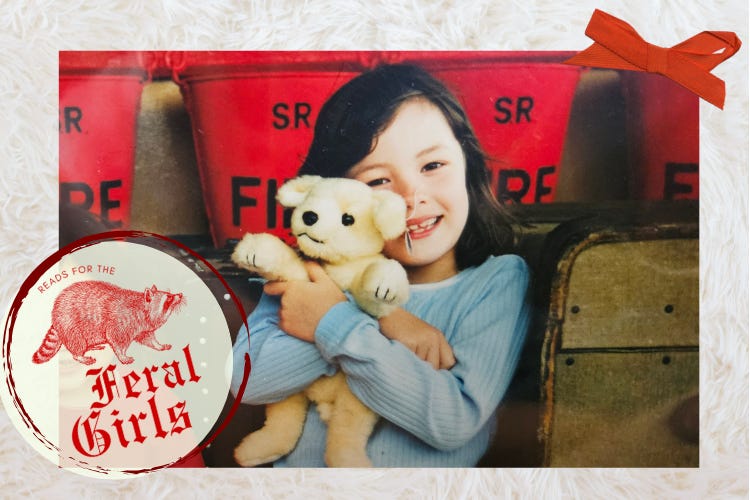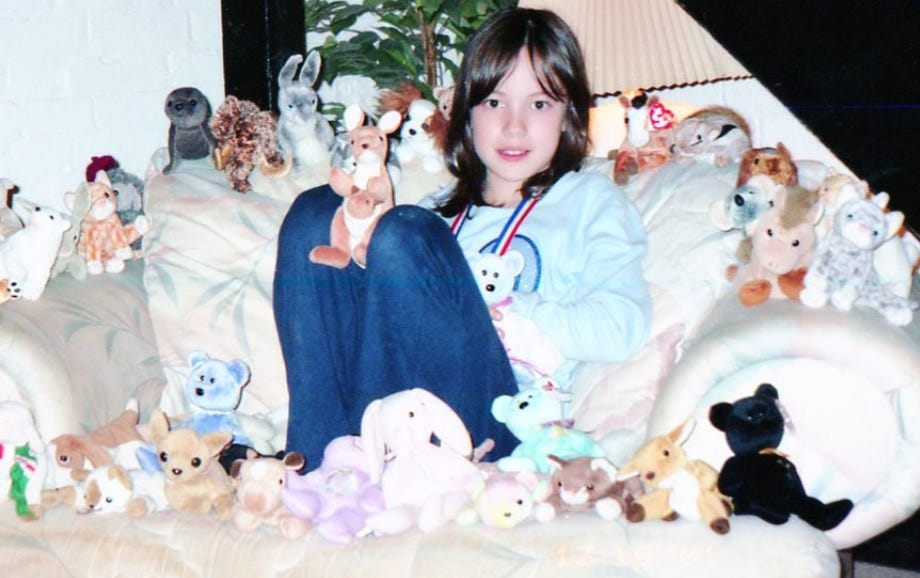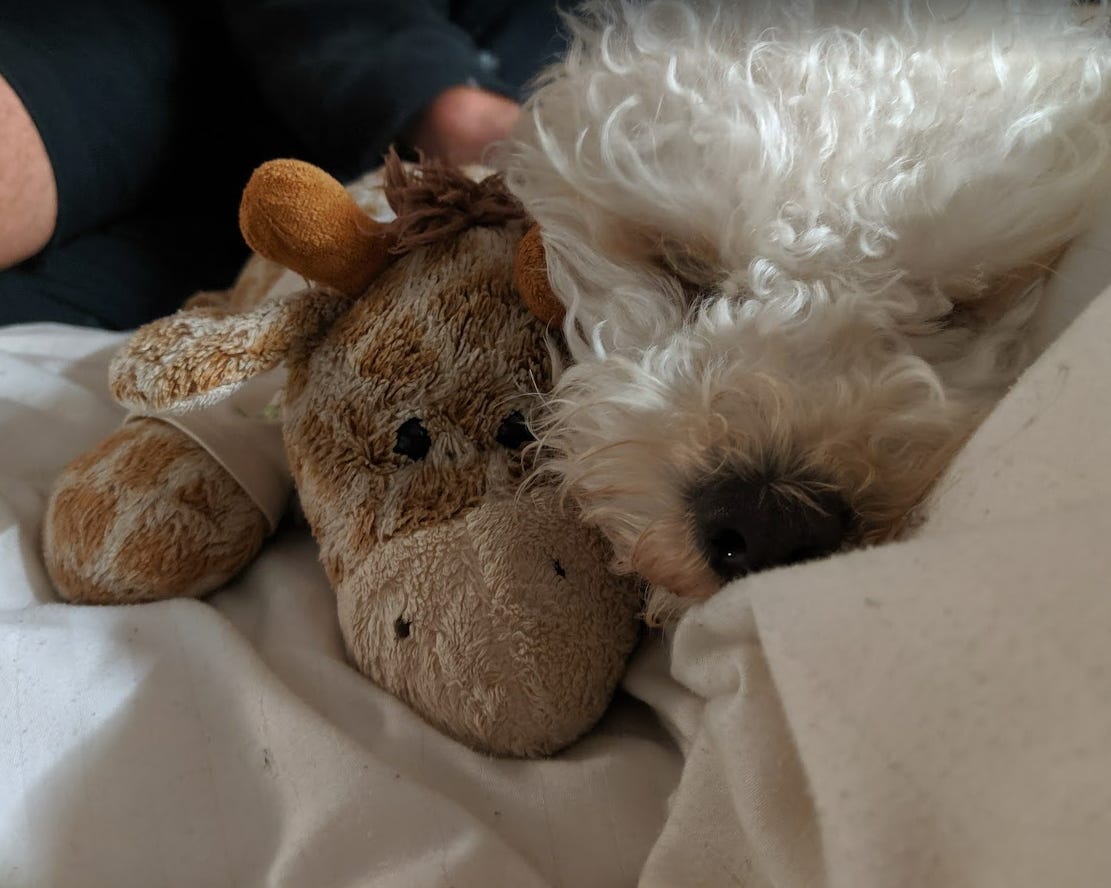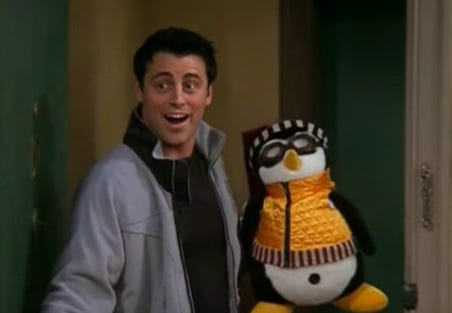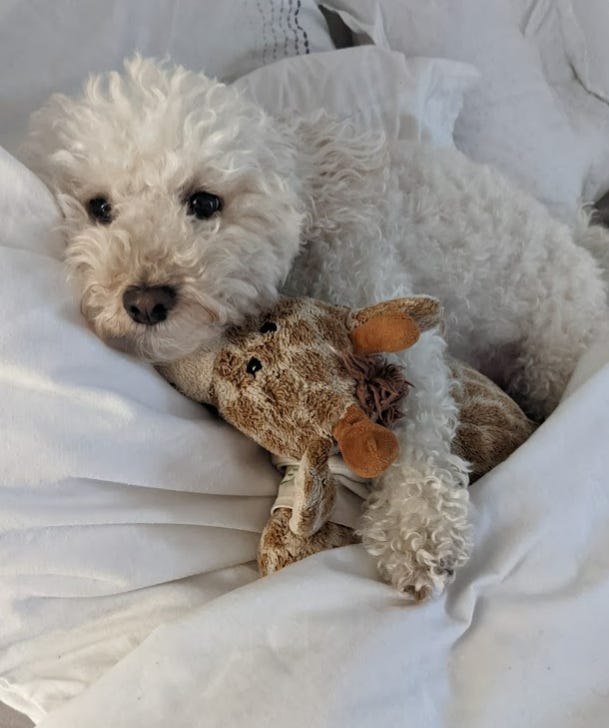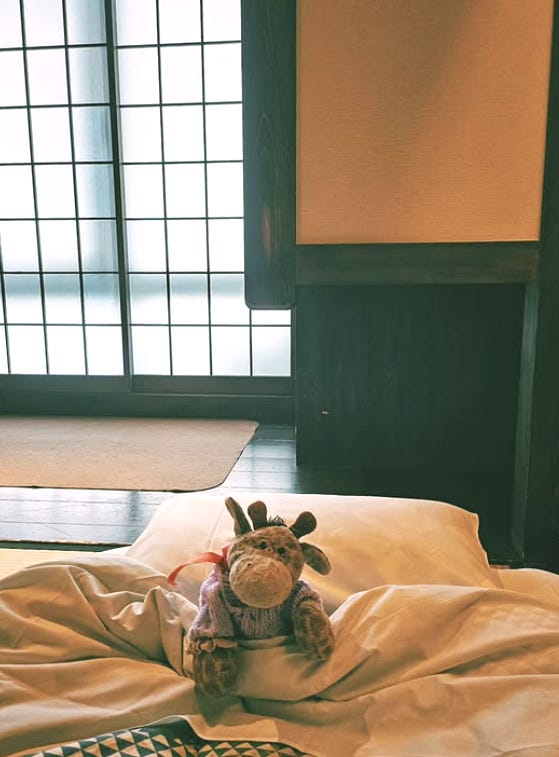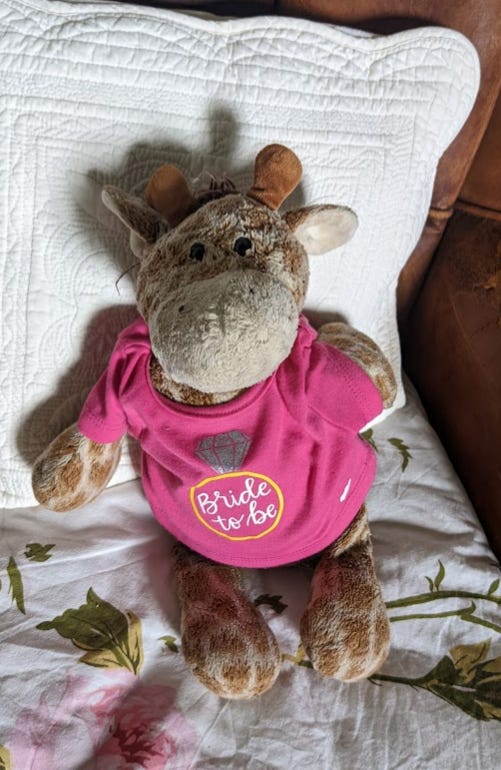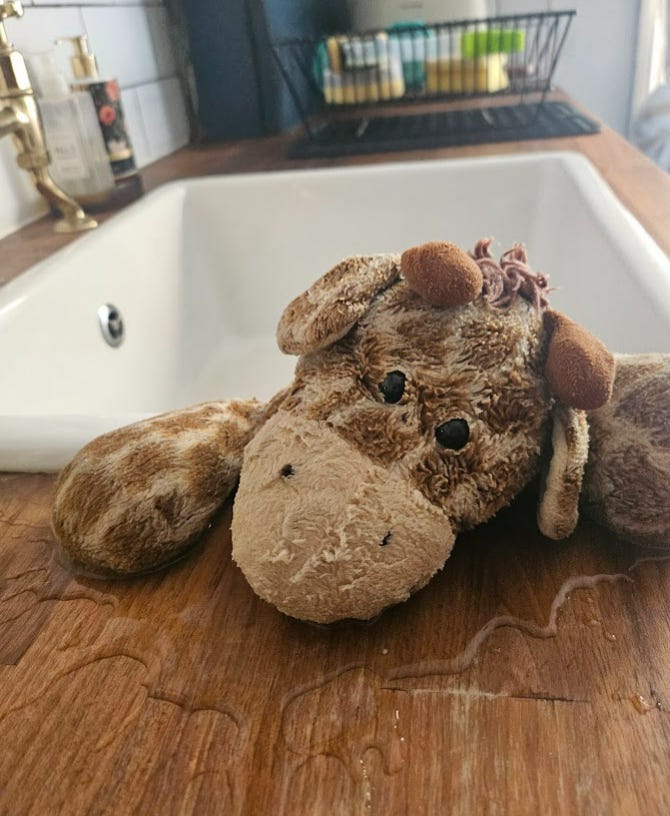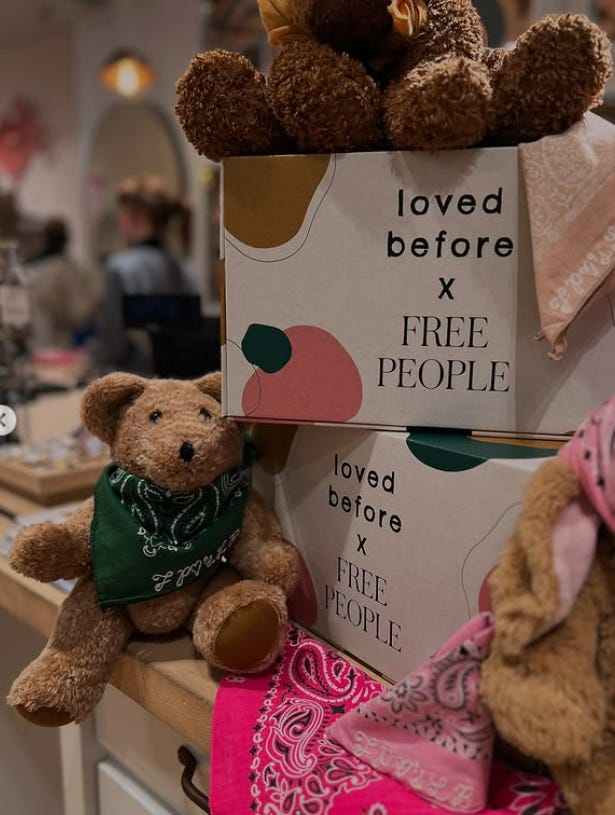Everyone who knows me knows I have a soft spot for a stuffed animal, but I think that with this article I may well be about to destroy the ‘cute quirky girl’ persona people have created for me with my truth. Some people won’t get it - it may seem weird, or crazy, or childish. But I’m going to speak on it anyway, because I want to do my bit to eradicate any sort of stigmas. If even one person reads this and finds they resonate with it, or is comforted by my story, then it’s worth it.
I have always done my bit on social media to be open about mental health, to fight against any stigmas or misconceptions. I’ve had depression for the best part of my life (100 milly fo’ nilly) and am very open about this, I’m not ashamed or embarrassed about the strength it takes to carry on with life when you don’t really want to be around. I was recently diagnosed with ADHD, which I had suspected for a few years, and am speaking more about that now that I have the official diagnosis, because before I didn’t want to be accused of hopping onto a trend or self-diagnosing.
The diagnosis that I hadn’t really expected which was noted at the end of my report was autism. I was pretty ignorant about autism, only really knowing the stereotypical ways of presenting, and certainly hadn’t considered what autism may look and feel like for someone with ADHD as well, like myself. Often, the ADHD overpowers and hides much of the autism, which is why it can go undiagnosed for so long. So the more I researched, the more I found comfort and recognition in lots of the ‘funny little things’ I do which I had thought were just unique to me and are actually just very common traits of autism.
Anyways, meet Giraffe. That’s what you’re all here for, let’s be honest.
I’d love to say that Giraffe was gifted to me by someone special, has been with me since birth, etc. But the fact is, I bought giraffe for myself at The Bear Factory (RIP, now Build-A-Bear) when I was eleven. Perhaps growing up with a turbulent home life meant that having the independence to go out on my own and get something for myself, by myself, was a big part of self-soothing. Who knows, I’m not a psychiatrist! Anyway, Giraffe was lying in the box of unfilled corpses, with it’s quirky little face all stuffed screaming ‘pick me! pick me!’, the sad sack of a body limp behind it and begging for someone to shove a pipe up it’s arse and stuff it. I loved that giraffe the moment I saw it. Out of all the giraffes in the box, I only wanted that specific one. They all looked identical to other people, but to me, they each had a different aura and personality and the one I wanted was the only one I wanted. Think Joey in Friends when he wants the original Hugsy. The replica just isn’t the same.
Even at the age of eleven, I understood the comedic irony of a giraffe with no neck. It was an oddball, like me. Kindred spirits. I handed over my hard-earned pocket money and left that shop, Giraffe in tow. (We had a star chart in our house which determined how much weekly cash we were given. One of the ‘chores’ was ‘no fights with your sister.’ I never managed that one, so saving up was pretty tough.) It was a big investment to spend £12ish on Giraffe - I could have gotten three Beanie Babies with that money!
I never gave Giraffe a name. Nor a gender. It’s just non-binary Giraffe. Something about it called out to me. As I’ve aged, I’ve noticed patterns. I’m extremely specific with which stuffed animal ‘speaks to me’. My poor husband has gifted me Jellycats for Christmas, only for me to have to admit to myself that it’s not ‘the right one.’ I’ve been researching and discovered that it’s very common for autistic individuals to have hyper-empathy, feeling extreme and sometimes overwhelming emotion for others, despite not always being able to interpret their own emotions about personal situations. This is probably what makes so many people with autism brilliant writers - we can really feel our character’s feelings.
Sometimes, this extends further, and reaches inanimate objects. This is called Object Personification, and basically means that I’m attributing emotions and personalities to stuffed animals. (When I was little, I also did it with cars.) I’ve always been this way, since the age of three you wouldn’t catch me without a stuffed animal, and the idea of leaving them behind for the day would make me cry because I felt I was neglecting them, or leaving them out. The release of Toy Story only reinforced my beliefs. So when I say that Giraffe looked up at me from that sad little box at the Bear Factory and wanted me to take care of it, believe me - I’m serious. You’ll be prising Giraffe out of my cold, dead hands.
As I’ve grown older, I’ve gotten picker with stuffed animals. It goes beyond a cute face. It has to be the right softness, the right weight, ideally with beans somewhere in the body, and it has to have this mysterious unknown aura about it where I can look at it and immediately know it’s personality. Giraffe still ticks all those boxes, and has been one of my greatest comforts throughout my life. A stable certainty amidst chaos. I’m not stupid, I know it’s not real. But it feels real, and is something I can always count on to be exactly the same, even when everything else might feel like it’s falling apart.
It sat in bed with me from the day I bought it all the way up to university, when it would get hidden away because it definitely wasn’t cool to be eighteen with a stuffed animal at university whilst bringing boys (and the odd girl, but ‘nah nah just for fun, I’m so straight’!) back to my room after nights out. I’m not sure when it happened, but at some point I just didn’t care to be ashamed of Giraffe, and now it’s still with me, sitting on my marital (a straight man, can you believe?!) bed. When I’m hungover after a big night out, my friends know to bring me a big glass of water - and Giraffe.
After a few OMG-I-LEFT-GIRAFFE-IN-THE-BED moments at hotels, I stopped travelling with Giraffe, taking another less-sentimental friend along with me. Giraffe is just too big a part of my life to risk losing. My husband has been instructed that if there is ever a fire in the house, the three things he must rescue for me are Betsy, the memory box I keep for my dad, and Giraffe. But when I travelled to The Motherland (Japan) for the first time, I couldn’t bear the thought of going and experiencing something so huge to me without Giraffe. So I bought an airtag which I tied around it’s neck with a ribbon and off we went. The security it gave me to know that if I lost Giraffe I would be able to track them down and be reunited was worth the money.
Giraffe was also there on my wedding day, with a Bear Factory Build-A-Bear Bridal t-shirt, so everyone knew that the real star of the day was Giraffe, not me, alleviating pressure for me to look good or act cool. When my dad died, it was Giraffe’s beaned body that I sobbed into all day, it’s fur sodden.
For all our travels, crying, cuddling, hungover vomiting and emotional supporting, Giraffe in surprisingly good nick, all things considered. One of the things I do to feel calm or when I can’t sleep is rub the inside of it’s ear, but I do it gently and the fur has somehow held strong, still silky and comforting. I also do spa days as needed, dunking Giraffe ceremoniously in the sink with laundry detergent and baby shampoo to keep it clean, smelling good, and soft. Some people don’t like to wash their stuffed animals or thinks it affects their memories or are scared of spoiling them, but for me it’s important that Giraffe lasts as long as possible and stays soft and clean, so we don’t mind a bath.
All in all, I think that people shouldn’t judge an adult for wanting to have a stuffed animal with them to support them through their day, particularly autistic adults who may have a particular emotional tie to the toy, or who find it particularly hard to self-regulate in overstimulating environments. I always carry a soft keyring or something in my bag if I know I’m going to be somewhere busy, like a shopping centre, to help ground me if I begin to feel a bit overwhelmed or sicky.
I’ve taken a stuffed animal to a few of my book events now, and am always happy when someone points them out, says they’re cute, or that they appreciate me having it in public to give them the confidence to do so, too. In Japan, it’s common for adults to have stuffed animal keychains or bags, and the trend hasn’t made it across to the West, so it can be seen as strange, but for all the times I’ve gone out with one, nobody has ever said anything about it or looked at me strangely. We tend to think the world is looking at us, judging us, and forget that everyone is just living their own life and thinking about themselves, that we as strangers are just blinks to them that they really don’t think or care about.
To end I have found some nice articles on stuffed toys and autism, but also, I’d like to shout out to two accounts that bring me great joy.
The first is Sid Batty. Sid was documenting his travels around the world, and suffers from social anxiety, depression, and OCD. He bought a duck called Quack to act as a supportive partner and symbol of positivity on his trip. A random picture he posted with Quack quickly went viral. I think Sid was quite overwhelmed with the positive response, at how many people found comfort in seeing a young man happily out in public with his duck. So Sid and Quack became quite the famous pair, travelling the world and raising awareness about mental health for men. They go to clubs together, on boats together, shopping together, cook together, eat out at restaurants together, and even walk red carpets together. I love their account, and everything they stand for.
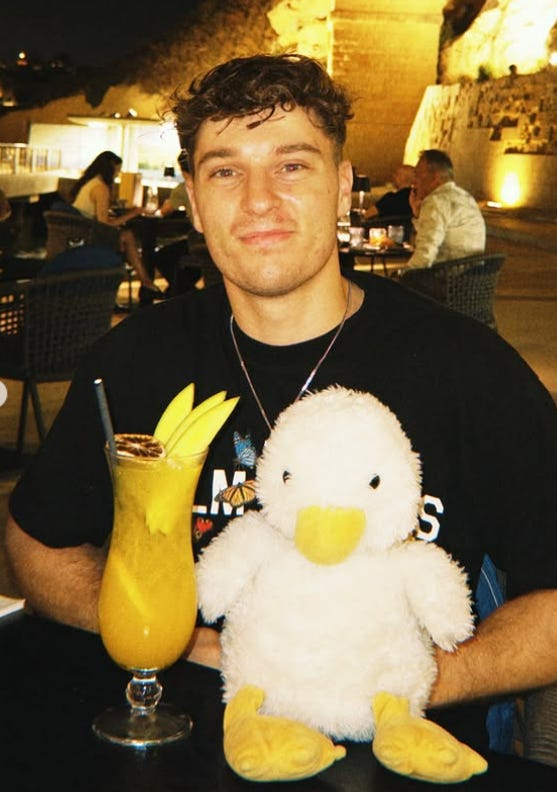
The second account I want to shout out is a UK brand that started during lockdown and has expanded massively. It’s called Loved Before, and as soon as I read the premise I was in love. It’s a company which tries to rescue stuffed animals from landfill, (8 MILLION pre-loved stuffies end up in landfill EVERY YEAR!), so they rescue them, clean them, and rehome them. As the project quickly grew from a one-woman-in-her-home show, people began donating their old friends with names and stories to accompany them into their next life. Now it’s a fully fledged adoption service and sustainable international business stocked in shops like Selfridges. They work so hard recycling people’s stuffed animals, sustainably helping the environment and saving a little furry ‘life’ at the same time.
And to end, some articles to check out:
Why Cute Things Matter for Autistic Adults: Equanimity Psychological
Why Do Autistic Adults Love Plushies? : HappyDandis
Celebrating Our Soft Toys: Wellcome Collection by
If Your Neurodivergent Ass Hasn’t Rediscovered Plushies : Autostraddle
Jamie & His Lion, The Adults Who Take Soft Toys to Work : BBC
The Importance of Comfort Items for Autism : Rainbow Therapy
Autism & Stuffed Animals, How Do They Help? : Autism Parenting Magazine





